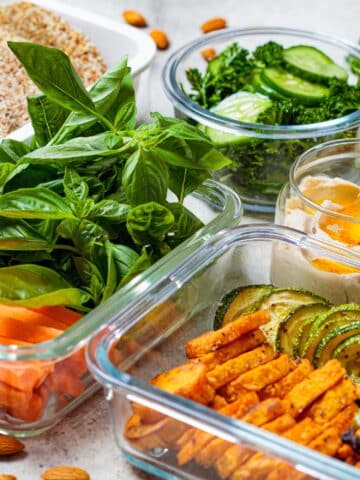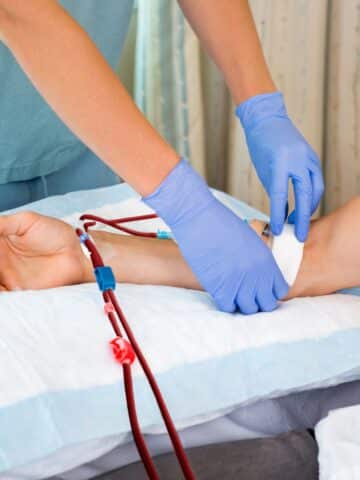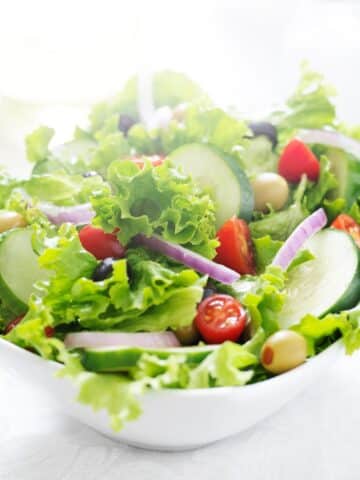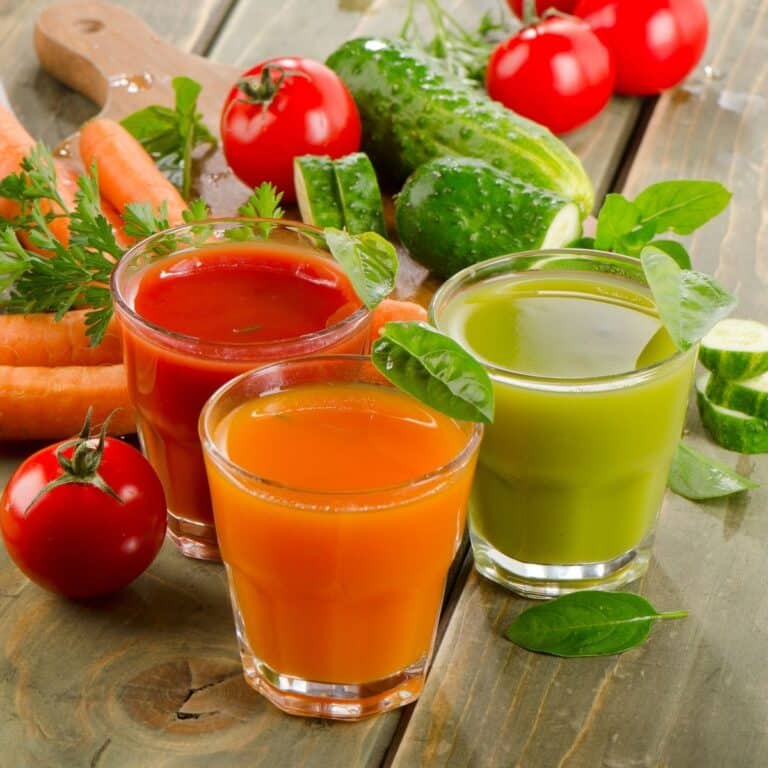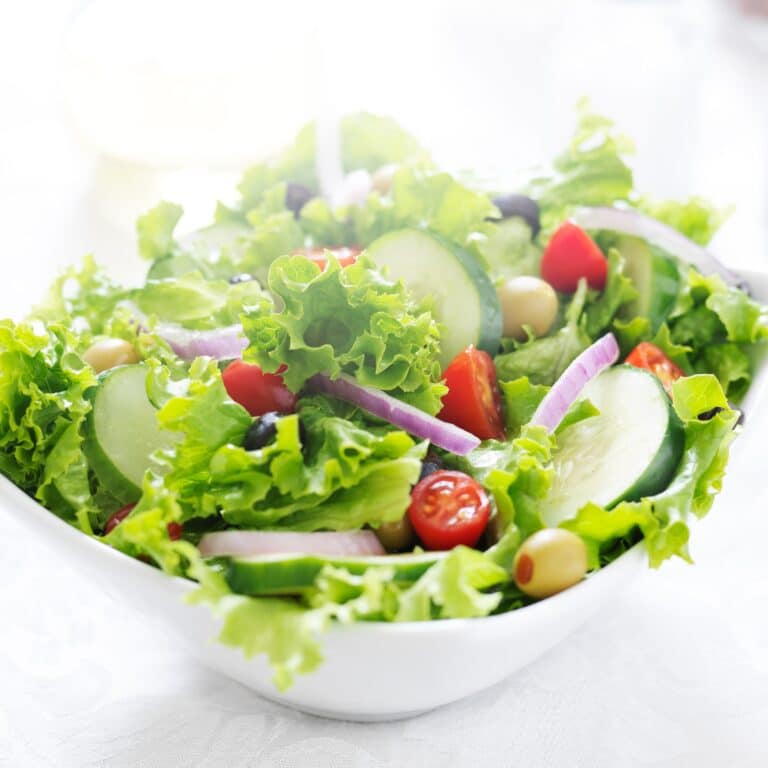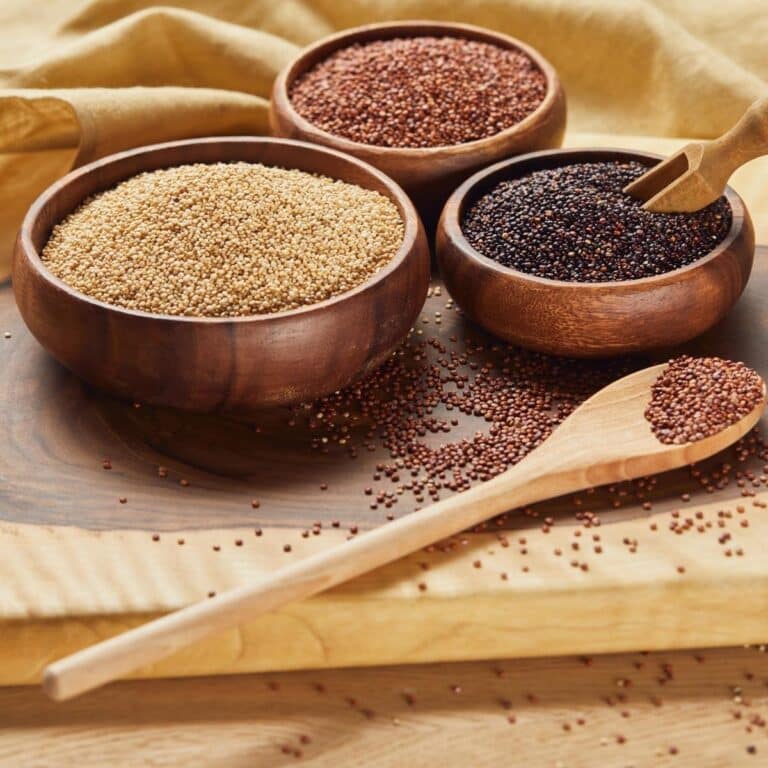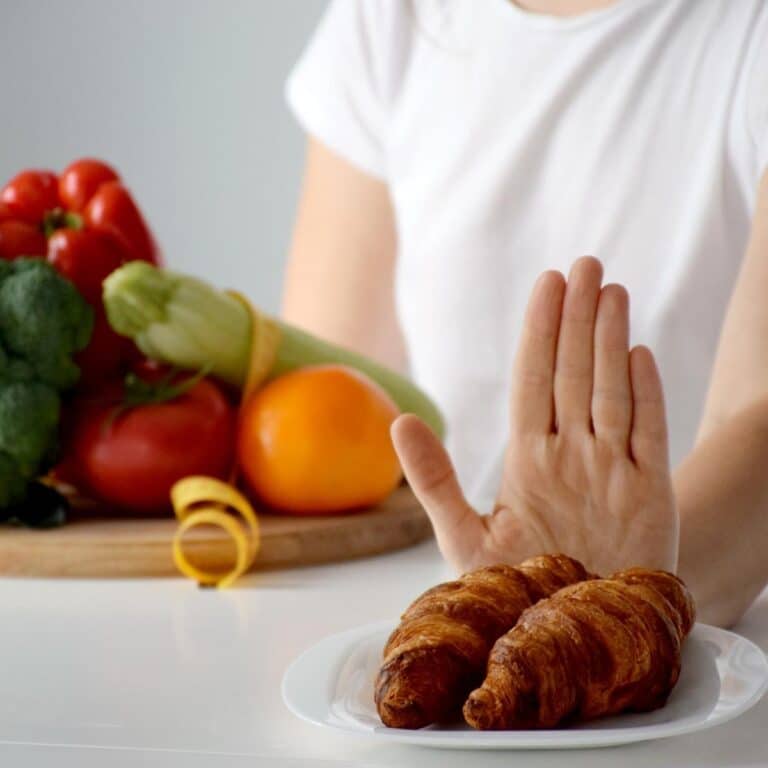Diet for Renal Dialysis Patients
Are you a renal dialysis patient looking for guidance on your diet? Understanding the importance of sodium control, managing potassium levels, and meeting protein requirements are key aspects of your journey.
It is important to know that a renal dialysis diet may differ from person to person, depending on the seriousness of the renal failure, and the frequency that dialysis is required. As a general rule, it is best to follow the doctors’ instructions carefully as renal failure is a serious health condition, which can lead to heart failure and even death.
If the dietary requirements are followed strictly, there is no reason why the quality of life cannot be as normal as possible once you are on your renal dialysis diet plan (dialysis diet guidelines).
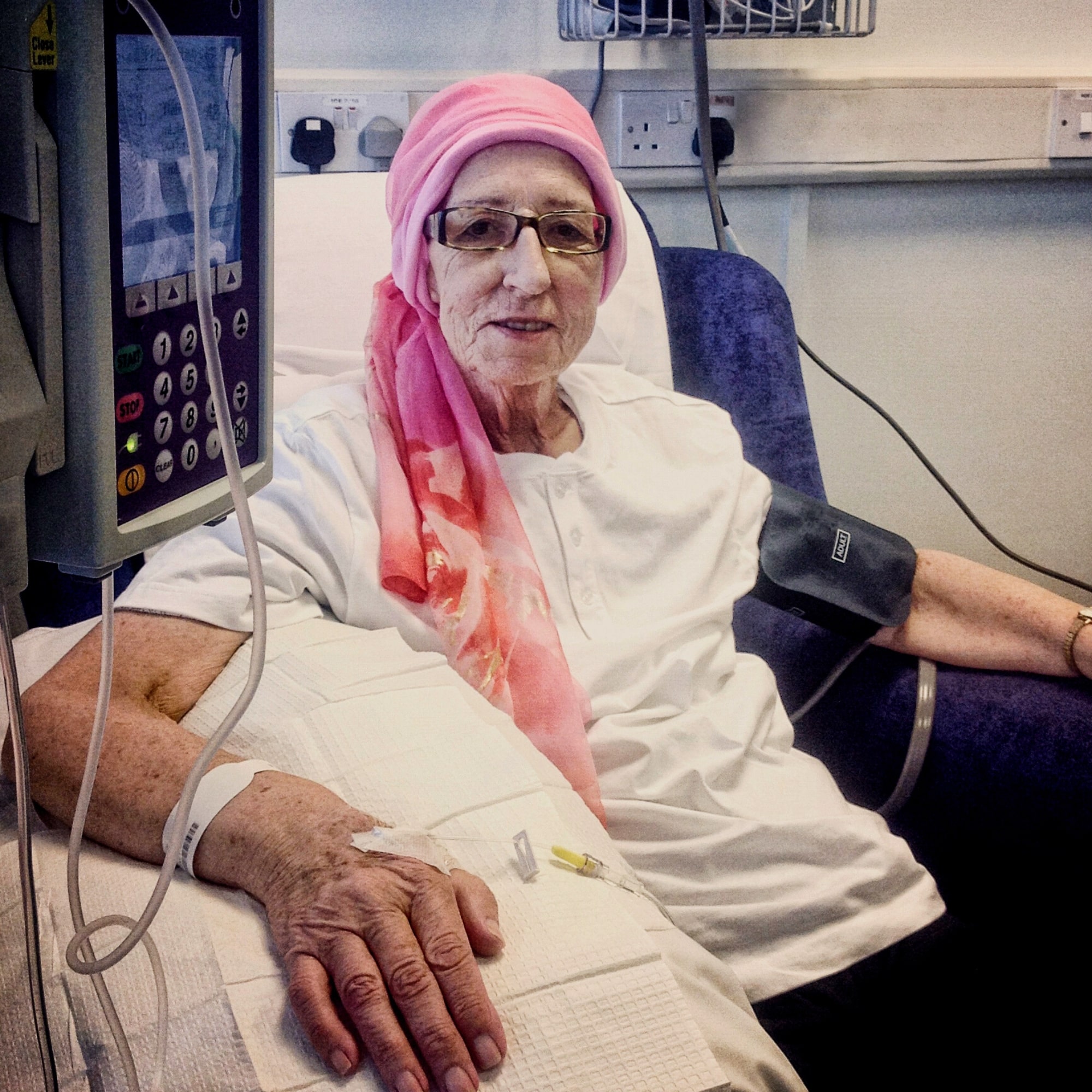
In this article, we will provide evidence-based information to help you navigate the complexities of a renal dialysis diet.
With guidelines on fluid intake (fluid restricted diet menu), salt and sodium restrictions, as well as recommendations for grains, cereals, fruits, and juices, we aim to empower you in making informed choices that support your health and well-being.
Key Takeaways
- Proper fluid balance and monitoring urine output are crucial for maintaining hydration levels and preventing fluid overload.
- Restricting high-potassium foods minimizes the risk of hyperkalemia, and cooking methods like boiling or soaking can help reduce potassium content in vegetables.
- Consuming high-quality protein sources supports muscle health and minimizes waste buildup.
- Limiting sodium intake helps prevent fluid buildup and reduces strain on the kidneys, and salt substitutes containing potassium chloride can lower sodium intake without compromising taste.
Jump to:
- Key Takeaways
- Understanding the Renal Dialysis Diet
- Importance of Sodium Control in Renal Dialysis Diet
- Managing Potassium Levels in Renal Dialysis Diet
- The Role of Protein in Renal Dialysis Diet
- Fluid Intake Guidelines for Renal Dialysis Patients
- Phosphorus Control
- Grains and Cereals in Renal Dialysis Diet
- Fruit and Juice Recommendations for Renal Dialysis Patients
- FAQs for Renal Dialysis Diet
- A Proper Renal Dialysis Diet Can Help You Triumph Over Kidney Failure
For More Recipes and Ideas --->> Get Your Free Meals and Recipes That Are Perfect for Pre-Dialysis Diets, Pre-Dialysis with Diabetes, or Dialysis Diets.
Understanding the Renal Dialysis Diet
When it comes to dietary restrictions (renal diet basics) and guidelines for individuals undergoing renal dialysis, it's crucial to pay close attention to what you eat. Following a specialized diet can have a significant impact on your overall health and well-being.

The Need for Renal Dialysis Diet
The Renal Dialysis Diet is imperative for patients with kidney failure, particularly End-Stage Renal Disease (ESRD), which signifies the advanced stage of Chronic Kidney Disease (CKD).
CKD is a progressive condition where the kidneys' ability to filter waste and regulate fluid and electrolyte balance diminishes over time. In ESRD (ESRD Prognosis) or kidney failure, this dysfunction becomes severe, necessitating renal replacement therapies like dialysis.
Kidney failure disrupts the body's equilibrium, leading to the accumulation of toxins, electrolyte imbalances, and fluid retention. The Renal Dialysis Diet addresses these challenges by carefully managing nutrient intake.
It typically involves limiting protein to mitigate the buildup of waste products, controlling sodium to maintain fluid balance and blood pressure, and restricting potassium and phosphorus to prevent life-threatening imbalances.
By adhering to this specialized diet, patients undergoing dialysis optimize the effectiveness of their treatments and minimize complications such as fluid overload, cardiovascular issues, and bone disorders.
The Renal Dialysis Diet is tailored to the specific needs of kidney failure patients, playing a crucial role in improving their overall quality of life and health outcomes.
Dietary Restrictions and Guidelines
Dietary restrictions and guidelines in a dialysis diet are crucial components of managing kidney failure.
Sodium: Sodium intake is limited to control fluid retention and blood pressure. Excessive sodium can lead to fluid buildup, causing strain on the heart and increasing blood pressure. Processed foods, canned goods, and salty snacks are restricted, while fresh and homemade options are favored.
Potassium: Potassium restriction prevents abnormal heart rhythms and muscle weakness. High-potassium foods like bananas, oranges, and potatoes are restricted. Instead, patients are encouraged to choose low-potassium alternatives to maintain proper heart function.
Fluid: Monitoring fluid intake is essential to prevent fluid overload, which can cause edema and increase blood pressure. Patients must balance their fluid consumption with their dialysis schedule, limiting beverages like sodas and minimizing high-water-content foods like soups and fruits.
Protein: Protein intake is adjusted to reduce the buildup of waste products in the blood. High-quality protein sources like lean meats, poultry, and eggs are encouraged. Proper protein intake helps maintain muscle mass without overburdening the kidneys. Make sure you know the protein for CKD Patients by stage.
Phosphorus: Phosphorus restriction is critical to prevent bone and cardiovascular complications. Foods rich in phosphorus, including dairy products and processed foods, are limited. Patients may need phosphorus-binding medications to further manage levels.
Adhering to these dietary guidelines ensures that dialysis patients can better manage their kidney function, reduce complications, and enhance their overall quality of life. Regular consultation with healthcare professionals and dietitians is crucial to tailor these restrictions to individual needs and ensure proper nutrition.
Importance of Sodium Control in Renal Dialysis Diet
When it comes to managing your renal dialysis diet, understanding the role of sodium is essential. Sodium can lead to fluid retention in the body, putting additional strain on your kidneys. It's important to control your sodium intake to help prevent this and maintain a healthy balance of fluids in your body.
Sodium and Fluid Retention
Excess sodium intake has a detrimental impact on dialysis patients, exacerbating fluid retention and worsening hypertension.
Sodium plays a key role in regulating fluid balance within the body. In dialysis patients, whose kidneys are compromised, the ability to excrete excess sodium is impaired. This leads to sodium accumulation in the bloodstream, triggering a chain of events that contribute to fluid retention and high blood pressure.
As sodium levels rise, water is drawn from the cells into the bloodstream to maintain proper sodium-water balance. This results in an increased volume of circulating blood, which puts strain on the heart and blood vessels.
The heart has to work harder to pump this excess fluid, leading to an elevation in blood pressure. Elevated blood pressure not only increases the risk of cardiovascular complications but also strains the blood vessels within the kidneys, further compromising their function.
Dialysis patients are particularly vulnerable to these effects due to their already compromised kidney function. Therefore, strict sodium restriction is crucial in their dietary management.
By minimizing sodium intake, fluid retention can be reduced, helping to alleviate the burden on the cardiovascular system and improve blood pressure control.
Salt Substitutes and Potassium?
Salt substitutes are sometimes used in dialysis renal diets to add flavor without increasing sodium intake. However, caution is needed, especially regarding salt substitutes containing potassium.
While these substitutes replace sodium with potassium-based alternatives like potassium chloride, they can pose risks for dialysis patients due to their impaired potassium regulation.
Dialysis patients often experience elevated potassium levels, as their kidneys struggle to excrete excess potassium. Consuming potassium-rich salt substitutes can further elevate potassium levels, leading to potentially life-threatening cardiac arrhythmias or muscle weakness.
Hence, patients must exercise caution when using these substitutes. Consulting with healthcare professionals and dietitians is crucial to determine safe options that suit individual potassium restrictions, and to manage sodium intake without compromising potassium balance.
Controlling Sodium Intake
Controlling sodium intake in a renal dialysis diet is crucial to manage fluid retention and blood pressure. Patients should adopt several strategies to effectively limit sodium consumption.
Firstly, reading food labels is essential to identify high-sodium products; foods with more than 20% of the daily recommended sodium intake per serving should be avoided.
Secondly, choosing fresh, unprocessed foods helps reduce sodium intake, as processed and canned foods tend to be high in sodium.
Avoiding foods with added salt or salty seasonings, such as soy sauce and bouillon cubes, is important. Additionally, limiting the use of table salt during cooking and at the table aids in sodium reduction.
Patients should choose low-sodium alternatives like herbs, spices, and lemon juice to enhance flavor. High-sodium condiments like ketchup, mustard, and pickles should also be used sparingly.
Foods naturally high in sodium, such as processed meats (bacon, sausages), canned soups, and salty snacks (chips, pretzels), should be strictly avoided. Dining out can be challenging, so patients should inquire about low-sodium options or request meals to be prepared without added salt.
By diligently monitoring food choices and opting for fresh, whole foods while avoiding sodium-rich items, dialysis patients can successfully control sodium intake, mitigating fluid retention, and maintaining healthy blood pressure levels. Consulting with healthcare professionals and dietitians can provide personalized guidance for optimal sodium management.
Managing Potassium Levels in Renal Dialysis Diet
Potassium, found naturally in animal proteins and certain fruits and vegetables, could be harmful to some renal failure patients. When it comes to managing your potassium levels in a renal dialysis diet, it's important to consider the impact on heart health. High potassium levels can put strain on your heart and increase the risk of cardiovascular complications.
Potassium and Heart Health
Potassium plays a significant role in heart complications for dialysis patients. As a crucial electrolyte, potassium is instrumental in maintaining proper heart rhythm and muscle function. However, in the context of impaired kidney function and dialysis treatment, the balance of potassium becomes precarious.
Dialysis patients often face the risk of hyperkalemia, an elevated level of potassium in the blood. Hyperkalemia can disrupt the electrical signals that control the heart's contractions, potentially leading to severe arrhythmias or even sudden cardiac arrest.
The heart's reliance on carefully balanced potassium levels underscores the critical nature of managing potassium in dialysis patients.
Imbalanced potassium levels can strain the already compromised cardiovascular system of dialysis patients. The heart's ability to pump blood effectively and maintain a steady rhythm becomes compromised, heightening the risk of serious heart complications.
Proper monitoring of potassium levels through medical supervision and regular blood tests is vital to mitigate these risks and prevent potentially life-threatening cardiac events.
Healthcare professionals work closely with dialysis patients to manage potassium levels and reduce the likelihood of heart-related complications.
Controlling Potassium Intake
Controlling potassium intake is crucial for renal dialysis patients to prevent hyperkalemia and related health complications. Several strategies can be adopted to manage potassium consumption effectively.
Primarily, patients should prioritize consuming low-potassium foods. These include apples, berries, carrots, and green beans, which are relatively lower in potassium compared to high-potassium options like bananas, oranges, and potatoes. Portion control is essential, as even moderate amounts of high-potassium foods can contribute to elevated levels.
Cooking methods can also impact potassium content. Boiling vegetables leaches potassium into the cooking water, so using alternate cooking techniques like steaming or baking can help minimize potassium intake. Rinsing canned fruits and vegetables before consumption can also reduce their potassium content.
Below is a table highlighting some common foods and their potassium content:
| Food | Serving Size | Potassium (mg) |
| Banana | 1 medium | 422 |
| Spinach | 1 cup cooked | 839 |
| Avocado | ½ fruit | 487 |
| Sweet potato | 1 medium | 542 |
| Yogurt (low-fat) | 1 cup plain | 380 |
Reading food labels and choosing products with lower potassium content is recommended. Consulting a dietitian or healthcare professional is crucial to develop a tailored dietary plan that aligns with individual potassium restrictions while ensuring proper nutrition.
Regular monitoring of potassium levels through medical assessments is essential to maintain a balanced diet and prevent adverse health effects.
The Role of Protein in Renal Dialysis Diet
When it comes to protein requirements for dialysis patients, it is crucial to understand the specific needs of their bodies and how protein intake can affect their overall health.
Dialysis patients often have increased protein needs due to losses during treatment and the need for tissue repair and maintenance.
It is important to focus on sources of high-quality protein that provide all essential amino acids while minimizing the intake of phosphorus and potassium, as these minerals can be harmful in excess for individuals with kidney disease.
Protein Requirements for Dialysis Patients
Protein requirements for dialysis patients are carefully balanced to address their unique nutritional needs and kidney function. The recommended daily protein intake for these individuals typically ranges from 1.2 to 1.5 grams per kilogram of body weight.
Protein is essential for maintaining muscle mass, supporting immune function, and repairing tissues, but excessive intake can burden the kidneys.
Dialysis patients often experience protein loss during treatments, which can contribute to muscle wasting and compromised immunity. Adequate protein intake helps counteract these effects, promoting overall health and well-being. However, excessively high protein intake can strain the kidneys' filtration capacity, leading to the accumulation of waste products.
Balancing protein intake is vital. High-quality protein sources like lean meats, poultry, fish, eggs, and dairy products are preferred due to their amino acid profile. Patients are advised to distribute protein intake evenly across meals and snacks to optimize absorption and utilization.
Regular consultations with dietitians or healthcare professionals ensure that patients meet their protein needs without overburdening their kidneys. By adhering to these guidelines, dialysis patients can support their nutritional requirements while minimizing the risk of kidney strain.
Sources of High-Quality Protein
For dialysis patients requiring increased protein intake, opting for high-quality protein sources is essential to support muscle maintenance and overall health. These sources offer a rich amino acid profile without overburdening the kidneys.
Lean meats, such as skinless poultry, turkey, and lean cuts of beef or pork, are excellent options. They provide essential nutrients like iron and zinc alongside protein. Fish, particularly those like salmon, tuna, and trout, are not only rich in protein but also offer heart-healthy omega-3 fatty acids.
Eggs are a versatile and affordable protein source, providing all essential amino acids. Dairy products like Greek yogurt and low-fat cheese are beneficial due to their protein content and additional nutrients like calcium and vitamin D, which support bone health.
Plant-based options like legumes (beans, lentils, chickpeas), tofu, and tempeh provide protein with the added benefits of dietary fiber and phytonutrients. Incorporating a variety of these high-quality protein sources into meals can help dialysis patients meet their increased protein needs while promoting optimal kidney function and overall well-being.
Consulting a dietitian or healthcare professional ensures a personalized plan that aligns with individual requirements.
Fluid Intake Guidelines for Renal Dialysis Patients
When it comes to fluid intake for renal dialysis patients, understanding the importance of fluid restriction and monitoring urine output is crucial.
Fluid restriction plays a key role in managing fluid balance and preventing complications such as fluid overload and hypertension.
Importance of Fluid Restriction
Fluid restriction is of paramount importance for renal dialysis patients due to compromised kidney function.
In these patients, the kidneys struggle to eliminate excess fluid from the body, leading to potential fluid overload. Excessive fluid retention can strain the heart, increase blood pressure, and exacerbate congestive heart failure.
For individuals undergoing hemodialysis or peritoneal dialysis, proper fluid balance directly impacts treatment efficacy. Dialysis treatments aim to remove waste and excess fluid, but if patients consume more fluids than their dialysis sessions can remove, it can result in complications like pulmonary edema or electrolyte imbalances.
Fluid restriction helps manage these risks, preventing cardiovascular strain and enhancing dialysis efficiency. Maintaining appropriate fluid levels minimizes the burden on the heart, enhances blood pressure control, and supports overall cardiovascular health.
Healthcare professionals collaborate with patients to determine personalized fluid restrictions based on factors like urine output and dialysis regimen. Adhering to fluid limitations empowers patients to actively participate in their health management, reducing the likelihood of complications and improving their quality of life.
Guide to Fluid Restriction
Controlling fluid intake is crucial for renal dialysis patients to prevent fluid overload and maintain overall health. Several strategies are employed to manage fluid intake effectively.
Portion Control: Monitoring the portion sizes of high-fluid-content foods like soups, stews, and fruits is essential. Eating smaller, more frequent meals can help distribute fluid intake more evenly throughout the day.
Beverage Choices: Opting for beverages with lower fluid content, such as ice chips, sugar-free hard candies, and small sips of water, is advisable. Limiting high-fluid drinks like sodas, juices, and caffeinated beverages helps manage fluid intake.
Monitoring Sodium: Sodium can contribute to thirst and fluid retention. Reducing sodium intake by avoiding high-sodium processed foods and restaurant meals helps control fluid craving.
Thirst Management: Rinsing the mouth with ice chips, using sugar-free gum or candies, and focusing on other activities can help manage the sensation of thirst without consuming excess fluids.
Consulting Healthcare Professionals: Collaborating with a healthcare team, including dietitians and doctors, is essential to set personalized fluid goals based on individual factors like dialysis regimen and urine output.
Regular Monitoring: Monitoring weight and fluid gain between dialysis sessions helps patients gauge their fluid balance and adhere to prescribed restrictions.
By implementing these strategies, renal dialysis patients can better regulate their fluid intake, optimize dialysis treatment, and reduce the risk of complications associated with fluid overload.
Phosphorus Control
Phosphorus intake recommendations play a crucial role in managing kidney disease. Limiting high phosphorus foods (low phosphorus foods) and taking phosphate binders as prescribed can help control blood levels of phosphorus and reduce the risk of bone disease and cardiovascular complications.
Why Dialysis Patients Need To Limit Phosphorus
Dialysis patients must limit phosphorus intake due to the impaired kidney function's impact on phosphorus regulation. The kidneys play a crucial role in maintaining a delicate balance of phosphorus in the body.
In kidney failure, the kidneys struggle to filter and eliminate excess phosphorus from the blood, leading to hyperphosphatemia - elevated phosphorus levels.
Elevated phosphorus levels in dialysis patients can have serious consequences. Excess phosphorus binds with calcium in the blood, causing calcium to be pulled from the bones. Over time, this leads to bone weakening and an increased risk of fractures.
Furthermore, elevated phosphorus levels can contribute to cardiovascular complications, including calcification of blood vessels and an increased risk of heart disease and stroke.
Limiting phosphorus intake through dietary choices is essential for dialysis patients. Foods rich in phosphorus, like dairy products, processed foods, and carbonated beverages, should be restricted. Phosphorus binders may also be prescribed to reduce phosphorus absorption from the digestive tract.
By adhering to phosphorus limitations, dialysis patients can mitigate the risk of bone and cardiovascular complications, ultimately improving their quality of life and long-term health outcomes.
Regular monitoring and consultation with healthcare professionals help ensure effective phosphorus management. You can also look into meal prep for kidney disease patient.
Tips on How To Cut Down On Dietary Phosphorus Intake
Cutting down dietary phosphorus intake is crucial for dialysis patients to manage complications like bone and cardiovascular issues. Here are some tips to effectively reduce phosphorus consumption:
- Read Food Labels: Choose foods with lower phosphorus content. Look for terms like "phosphate" or "phos" on labels, as they indicate phosphorus additives.
- Limit Processed Foods: Processed and fast foods tend to be high in phosphorus additives. Opt for fresh, whole foods to reduce phosphorus intake.
- Choose Lean Proteins: Select lean cuts of meat, poultry, and fish as they contain less phosphorus compared to fattier cuts.
- Dairy Alternatives: Choose low-phosphorus dairy or nondairy alternatives, like almond milk or rice milk, to reduce phosphorus intake from beverages.
- Soak and Rinse: Soak beans, lentils, and grains before cooking, then rinse thoroughly. This helps reduce their phosphorus content.
- Portion Control: Smaller portions of high-phosphorus foods help manage intake.
- Limit High-Phosphorus Foods: Minimize consumption of high-phosphorus foods like dairy products, nuts, seeds, and certain whole grains.
- Cooking Techniques: Boiling and soaking can help reduce phosphorus in foods like potatoes. Drain and rinse canned vegetables and fish to lower their phosphorus content.
- Phosphorus Binders: Take prescribed phosphorus binders as directed. These medications help reduce phosphorus absorption from food.
- Consult a Dietitian: Work with a dietitian experienced in renal nutrition. They can create a customized plan, considering phosphorus and other nutrient restrictions, to maintain balanced nutrition while reducing phosphorus intake.
Grains and Cereals in Renal Dialysis Diet
When it comes to your renal dialysis diet, it's important to pay attention to your fiber intake recommendations. Adequate fiber intake can help promote regular bowel movements and prevent constipation, which is a common issue for many dialysis patients (diet for renal dialysis patients).
Additionally, you should be mindful of the phosphorus content in grains as they can contribute to high levels of phosphorus in your blood. This can be harmful for your kidneys.
Fiber Intake Recommendations
Increasing fiber intake is essential for renal dialysis patients to maintain healthy digestion and prevent complications. Fiber plays a crucial role in promoting regular bowel movements and preventing constipation, which is a common issue among dialysis patients. Here are some key points to consider regarding fiber intake:
- High fiber foods: Incorporate more fruits, vegetables, whole grains, legumes, and nuts into your diet. These foods are rich in dietary fiber and can help improve digestive health.
- Fiber supplements: In some cases, it may be necessary to take fiber supplements under the guidance of a healthcare professional to meet the recommended daily intake.
- Benefits of fiber: Consuming an adequate amount of fiber can help lower cholesterol levels, control blood sugar levels, and promote satiety.
- Fiber and weight management: High-fiber foods tend to be more filling and can aid in weight management by reducing overall calorie intake.
Remember that it's important to consult with your healthcare team or registered dietitian before making any significant changes to your diet or starting new supplements. They will provide personalized guidance based on your specific needs.
Phosphorus Content in Grains
Phosphorus content in grains poses a challenge for dialysis patients seeking to balance fiber intake with phosphorus restriction. Whole grains like bran, wheat germ, and whole wheat flour are high in phosphorus, which can exacerbate hyperphosphatemia in kidney failure patients.
Balancing fiber intake while limiting phosphorus involves careful choices. Select grains with lower phosphorus content, like rice, corn, and oats, instead of high-phosphorus options. Soaking and rinsing grains before cooking can help reduce phosphorus levels. Opt for white bread instead of whole wheat, and consider refined grains when necessary.
Monitoring portion sizes is crucial. Smaller servings of whole grains can provide fiber without excessive phosphorus intake. Additionally, pairing whole grains with low-phosphorus protein sources can help offset phosphorus absorption.
Dialysis patients can also consider phosphorus binders as prescribed by their healthcare provider. These medications can help manage phosphorus absorption from food, allowing for greater flexibility in dietary choices.
Collaborating with a renal dietitian is essential. They can tailor a diet plan that balances fiber intake from whole grains with phosphorus limitations, ensuring optimal nutrition and overall health for dialysis patients (CKD Diet plan).

Fruit and Juice Recommendations for Renal Dialysis Patients
When it comes to fruit options for renal dialysis patients, it's important to focus on low-potassium choices. Some examples of low-potassium fruits include apples, berries, and grapes.
These fruits can be a great addition to your diet as they provide essential nutrients while keeping potassium levels in check.
Additionally, if you're looking for alternatives to juice for hydration, you can try infused water or herbal tea. These are both refreshing and hydrating options that won't negatively impact your potassium levels.
Low-Potassium Fruit Options
You should consider incorporating low-potassium fruit options into your diet as a renal dialysis patient. These fruits can provide you with essential nutrients while keeping your potassium levels in check.
Here are some benefits and tips to help you make the most of low-potassium fruit options:
- Low potassium smoothies: Blend together low-potassium fruits like apples, berries, and grapes with non-dairy milk for a tasty and nutritious beverage (smoothies for kidney disease).
- Low potassium snacks: Choose snacks like sliced peaches or pears instead of high-potassium alternatives such as bananas or oranges.
- Low potassium meal planning: Plan meals around fruits like strawberries, raspberries, and pineapple to ensure lower potassium intake.
- Low potassium cooking techniques: Bake or poach fruits like apples or pears to reduce their natural potassium content.
Incorporating these low-potassium fruit options into your diet can support your overall health and assist in managing kidney function during renal dialysis.
Juice Alternatives for Hydration
Dialysis patients seeking low-potassium alternatives to fruit juice have various options that still provide flavor and hydration without compromising potassium levels (renal diet drinks).
Herbal Teas: Herbal teas, like chamomile, peppermint, or hibiscus, are typically low in potassium and can be enjoyed hot or cold. They offer a range of flavors and benefits.
Infused Water: Infuse water with slices of lemon, lime, cucumber, or mint for a refreshing and low-potassium beverage. This adds a hint of flavor without significant potassium content.
Clear Broths: Low-sodium, clear broths or bouillon-based soups can provide a savory alternative to fruit juices, helping to quench thirst without raising potassium levels.
Sparkling Water: Plain, unsweetened sparkling water is a versatile choice. It can be enjoyed as is or flavored with a splash of lemon or lime juice for added taste.
Unsweetened Iced Tea: Opt for unsweetened iced tea, whether black, green, or herbal, as it typically contains lower potassium levels compared to fruit-based options.
Diluted Juice: If some fruit flavor is desired, dilute fruit juice with a larger amount of water to reduce the potassium concentration.
Consulting a dietitian or healthcare professional is recommended to ensure that chosen alternatives fit individual dietary requirements and restrictions. These options allow dialysis patients to enjoy flavorful beverages while maintaining proper potassium balance.
FAQs for Renal Dialysis Diet
Renal dialysis patients should exercise caution when considering fast food. These options often contain high levels of sodium, phosphorus, and potassium, which can be detrimental to their health. Selecting healthier choices, such as grilled chicken or salads without high-potassium ingredients, can be more suitable.
However, it's generally recommended to prioritize home-cooked meals or dine at establishments where nutritional information is available to make informed choices aligned with dietary restrictions. Consulting a dietitian or healthcare professional ensures safer dietary decisions for renal dialysis patients.
The renal dialysis diet plays a significant role in blood pressure management for patients with kidney issues. By controlling sodium intake, the diet helps prevent fluid retention, reducing strain on the cardiovascular system (exercise for healthy heart) and aiding blood pressure regulation.
Additionally, the diet's impact on managing fluid balance through limited fluid intake contributes to stabilizing blood pressure levels. Overall, adhering to the renal dialysis diet assists in maintaining healthier blood pressure for individuals undergoing dialysis treatment.
Yes, there are restrictions on dairy products for renal dialysis patients. Dairy products are typically high in phosphorus and potassium, which can be problematic for individuals with compromised kidney function. Excess phosphorus can lead to bone and cardiovascular issues, while high potassium levels can impact heart rhythm.
Patients are advised to choose low-phosphorus dairy alternatives or moderate their dairy intake. Working with a dietitian is important to develop a personalized plan that balances nutritional needs while managing phosphorus and potassium restrictions.
Renal dialysis patients should approach alcoholic beverages with caution. Excessive alcohol consumption can strain the liver, interact with medications, and disrupt fluid and electrolyte balance.
It's recommended to consult healthcare professionals before consuming alcohol, as they can offer personalized guidance based on individual health conditions and medications.
In many cases, limited alcohol consumption (renal diet and alcohol) might be acceptable, but patients should be mindful of their overall health and any potential interactions with their treatment plan.
Yes, renal dialysis patients often need to limit their intake of certain fruits and vegetables. Some of these foods can be high in potassium, which can pose risks for patients with compromised kidney function. Elevated potassium levels can disrupt heart rhythm.
Patients are typically advised to choose lower-potassium options and control portion sizes to maintain safe levels. Working with a dietitian is essential to create a balanced diet plan that considers individual potassium restrictions while ensuring adequate nutrition.
A Proper Renal Dialysis Diet Can Help You Triumph Over Kidney Failure
The renal dialysis diet is vital for kidney failure patients on dialysis, managing fluid retention, electrolyte imbalances, and waste accumulation.
Adherence to this specialized diet significantly enhances their quality of life. It focuses on sodium control to curb fluid retention and hypertension, limits potassium intake to prevent heart issues, adjusts protein consumption for muscle health, restricts fluid to maintain balance (fluid restriction guidelines for CKD), and manages phosphorus for bone and cardiovascular health.
Collaborating with healthcare professionals ensures tailored nutrition. By adhering to these guidelines, dialysis patients can optimize treatment, reduce complications, and improve overall well-being.


